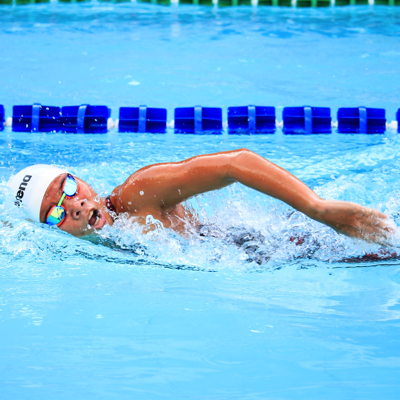Swimming can be much more than just a recreational activity; it’s a full-body workout that tests your endurance, strength, and technique. Whether you’re a casual swimmer or a competitive athlete, understanding and harnessing your Critical Swim Speed (CSS) can take your performance to the next level. In this blog post, we’ll delve into the value of CSS and explain how to calculate it.
What Is Critical Swim Speed (CSS)?
CSS is a concept in swimming that represents the pace at which you can swim for an extended period while maintaining a steady level of effort. It’s similar to your lactate threshold, which is the point at which lactic acid starts to accumulate in your muscles. CSS is expressed as a time per 100 meters or 100 yards, depending on your preferred unit of measurement.
But why is CSS important? CSS provides a benchmark for setting training intensities and pacing strategies in both distance and open-water swimming. By knowing your CSS, you can optimize your training and race strategies to improve your performance. It’s essentially your swimming sweet spot—the pace where you can push yourself without burning out too quickly.
How to Calculate Your CSS
To calculate your CSS, you’ll need a swim time trial and a good understanding of your endurance. Here’s a step-by-step guide to help you determine your CSS:
1. Warm Up: Begin with a proper warm-up to ensure your muscles are ready for the time trial. Swim for about 10-15 minutes at an easy pace, gradually increasing your effort.
2. Time Trial: Choose a distance that you can complete comfortably, but that still challenges you. For most swimmers, a 400-meter (or 500-yard) time trial works well. Swim it as fast as you can, giving your maximum effort.
3. Record Your Time: Once you’ve completed the time trial, record your total time in minutes and seconds. For instance, if you completed 400 meters in 6 minutes and 30 seconds, your time is 6:30.
4. Calculate Your CSS: Now, it’s time to calculate your CSS. Divide your time trial time by the distance you swam (in meters or yards). In our example, if you swam 400 meters in 6:30, your CSS would be:
CSS = Total Time (minutes) / Distance (meters)
CSS = 6.5 minutes / 400 meters
CSS = 0.01625 minutes per meter
CSS = 1 minute and 37.5 seconds per 100 meters
Congratulations! You’ve just calculated your Critical Swim Speed. In this example, your CSS is 1:37.5 per 100 meters.
Using Your CSS for Training and Racing
Once you know your CSS, you can tailor your training and race strategies to match your capabilities. Here’s how you can use your CSS effectively:
1. Training Intensity: CSS can help you determine the right training intensities for different workouts. For aerobic development, aim to swim slightly below your CSS pace. For threshold and speed work, train above your CSS pace.
2. Pacing in Races: Knowing your CSS is invaluable in open-water races and triathlons. It allows you to establish a sustainable race pace, preventing you from burning out too early or finishing with energy left untapped.
3. Progress Tracking: Regularly retest your CSS to track your progress. As your endurance and speed improve, your CSS should also improve. Adjust your training accordingly to keep challenging yourself.
4. Goal Setting: Your CSS can help you set realistic and achievable goals. Whether it’s completing a long-distance swim or improving your 100-meter sprint time, understanding your CSS can guide your training objectives.
In Summary
Critical Swim Speed isn’t just a number; it’s a powerful tool for swimmers of all levels. By calculating and utilizing your CSS, you can optimize your training, improve your race performance, and set and achieve your swimming goals. So, the next time you hit the pool, remember to calculate your CSS—it might just be the key to unlocking your full swimming potential.
Photo Credit : Photo by Jim De Ramos




